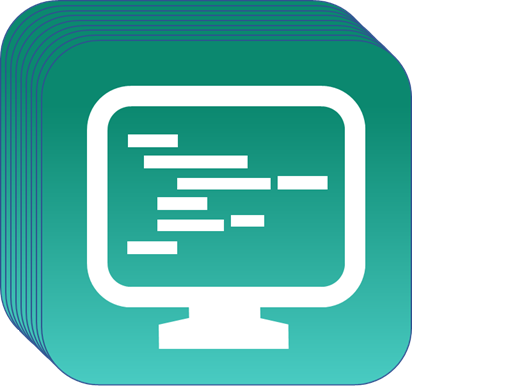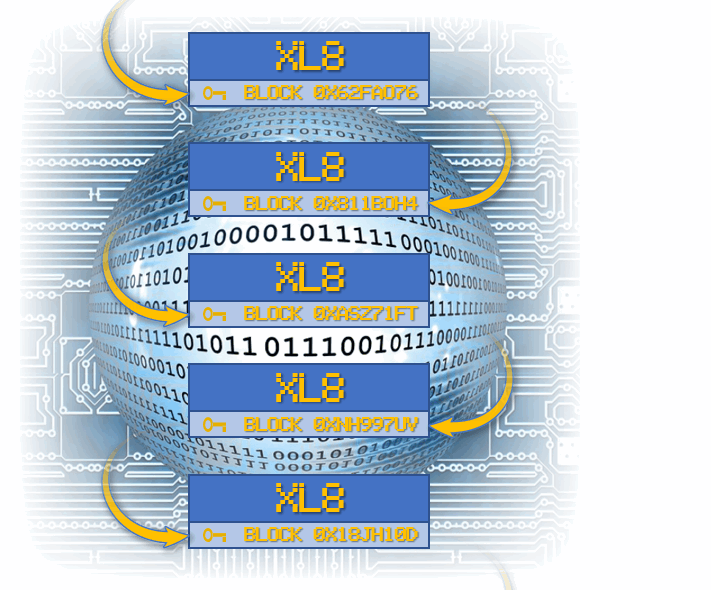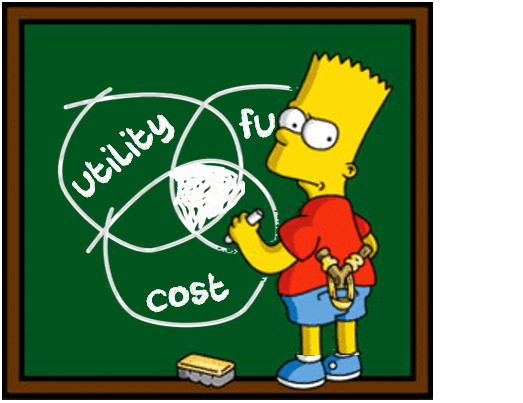 I can remember being asked in early 2007 to organise a report on the benefits of Passolo compared to other tools that also supported visual software localization. In the same year, shortly after that, SDL purchased Pass Engineering and SDL Passolo was born. At the time I didn’t know a lot about Trados Workbench or SDLX either as I had a very different role, and I only started getting interested in the technology we (and our competitors) use in 2008 just prior to the release of SDL Trados Studio 2009 the following year. In all that time since then, until a few months ago, I’m ashamed to say I’ve never taken more than a cursory look at it. It’s taken a course I’m doing at the moment at the University of Strasbourg to really bring home the value. One of the modules on this course is “Localization of Graphical User Interfaces” and under some expert tutorage I’m plugging many of the gaps I have in my knowledge of this industry. I’m even putting it to good use in my daily work!
I can remember being asked in early 2007 to organise a report on the benefits of Passolo compared to other tools that also supported visual software localization. In the same year, shortly after that, SDL purchased Pass Engineering and SDL Passolo was born. At the time I didn’t know a lot about Trados Workbench or SDLX either as I had a very different role, and I only started getting interested in the technology we (and our competitors) use in 2008 just prior to the release of SDL Trados Studio 2009 the following year. In all that time since then, until a few months ago, I’m ashamed to say I’ve never taken more than a cursory look at it. It’s taken a course I’m doing at the moment at the University of Strasbourg to really bring home the value. One of the modules on this course is “Localization of Graphical User Interfaces” and under some expert tutorage I’m plugging many of the gaps I have in my knowledge of this industry. I’m even putting it to good use in my daily work!
Author: Paul Filkin
Audio Visual Translation in Studio
 When I started to look at the subtitling industry little did I know just how fragmented it would be! For years we have talked about SRT and yet when I look at the filetypes that tools like Subtitle Edit claim to support I find over 200! Normally I’m not a big fan of standards but that’s probably because I live in a world where there is little variation and supporting different bilingual files is trivial in comparison. But if there was ever a good argument for one it would be here! Asking people what format they see most often does help to narrow it down, but as we often find when developing software, the interest usually comes after the event and not before! So what formats can a translation tool support today?
When I started to look at the subtitling industry little did I know just how fragmented it would be! For years we have talked about SRT and yet when I look at the filetypes that tools like Subtitle Edit claim to support I find over 200! Normally I’m not a big fan of standards but that’s probably because I live in a world where there is little variation and supporting different bilingual files is trivial in comparison. But if there was ever a good argument for one it would be here! Asking people what format they see most often does help to narrow it down, but as we often find when developing software, the interest usually comes after the event and not before! So what formats can a translation tool support today?
Apply a TM Template
 Ever since the release of Studio 2009 we have had the concept of Language Resource Templates, and ever since the release of Studio 2009 I’d risk a bet that most users don’t know what they’re for or how to use them. To be fair this is hardly a surprise since their use is actually quite limited out of the box and access to the goodies inside is pretty hard to get at. It’s been something I used to see users complain about a long time ago but for some years now I rarely see them mentioned anymore. This article, I hope, might change that.
Ever since the release of Studio 2009 we have had the concept of Language Resource Templates, and ever since the release of Studio 2009 I’d risk a bet that most users don’t know what they’re for or how to use them. To be fair this is hardly a surprise since their use is actually quite limited out of the box and access to the goodies inside is pretty hard to get at. It’s been something I used to see users complain about a long time ago but for some years now I rarely see them mentioned anymore. This article, I hope, might change that.
Wot! No target!!
 The origin of Chad (if you’re British) or Kilroy (if you’re American) seems largely supposition. The most likely story I could find, or rather the one I like the most, is that it was created by the late cartoonist George Edward Chatterton ‘Chat’ in 1937 to advertise dance events at a local RAF (Royal Air Force) base. After that Chad is remembered for bringing attention to any shortages, or shortcomings, in wartime Britain with messages like Wot! No eggs!!, and Wot! No fags!!. It’s not used a lot these days, but for those of us aware of the symbolism it’s probably a fitting exclamation when you can’t save your target file after completing a translation in Trados Studio! At least that would be the polite exclamation since this is one of the most frustrating scenarios you may come across!
The origin of Chad (if you’re British) or Kilroy (if you’re American) seems largely supposition. The most likely story I could find, or rather the one I like the most, is that it was created by the late cartoonist George Edward Chatterton ‘Chat’ in 1937 to advertise dance events at a local RAF (Royal Air Force) base. After that Chad is remembered for bringing attention to any shortages, or shortcomings, in wartime Britain with messages like Wot! No eggs!!, and Wot! No fags!!. It’s not used a lot these days, but for those of us aware of the symbolism it’s probably a fitting exclamation when you can’t save your target file after completing a translation in Trados Studio! At least that would be the polite exclamation since this is one of the most frustrating scenarios you may come across!
At the start of this article I fully intended this to be a simple description of the problems around saving the target file, but like so many things I write it hasn’t turned out that way! But I found it a useful exercise so I hope you will too. So, let’s start simple despite that introduction because the reasons for this problem usually boil down to one or more of these three things:
- Not preparing the project so it’s suitable for sharing
- Corruption of a project file
- A problem with the source file or the Studio filetype
A business resolution for 2019…
 There are three things that have stood out for me this year. The first is how much support SDL have provided to their users to make sure they are able to work successfully with their investment. The second is how little many users are aware of this, and the third is just how many users have used Trados for a decade or more and were not aware of what a support & maintenance contract can bring you. This last one has been the biggest surprise to me as I’ve spoken to people who thought a support contract was more than the cost of the software; to people who thought it was support only and to people who didn’t know SDL provided any support at all! So, one of my resolutions for 2019 will be to try and make sure that all our users are more aware of how to get help, even if they don’t want to purchase a support & maintenance contract. So, I’ll cover these things:
There are three things that have stood out for me this year. The first is how much support SDL have provided to their users to make sure they are able to work successfully with their investment. The second is how little many users are aware of this, and the third is just how many users have used Trados for a decade or more and were not aware of what a support & maintenance contract can bring you. This last one has been the biggest surprise to me as I’ve spoken to people who thought a support contract was more than the cost of the software; to people who thought it was support only and to people who didn’t know SDL provided any support at all! So, one of my resolutions for 2019 will be to try and make sure that all our users are more aware of how to get help, even if they don’t want to purchase a support & maintenance contract. So, I’ll cover these things:
- Support & Maintenance Contract
- SDL Community
- The Customer Experience Team
- The SDL AppStore Team
- The SDL Marketing Team
- Training
- Customer Experience Program
Slicing fruit!
 If there’s one thing I firmly believe it’s that I think all translators should learn a little bit of regex, or regular expressions. In fact it probably wouldn’t hurt anyone to know how to use them a little bit simply because they are so useful for manipulating text, especially when it comes to working in and out of spreadsheets. When I started to think about this article today I was thinking about how to slice up text so that it’s better segmented for translation; and I was thinking about what data to use. I settled on lists of data as this sort of question comes up quite often in the community and to create some sample files I used this wikipedia page. It’s a good list, so I copied it as plain text straight into Excel which got me a column of fruit formatted exactly as I would like to see it if I was translating it, one fruit per segment. But as I wanted to replcate the sort of lists we see translators getting from their customers I copied the list into a text editor and used regex to replace the hard returns (
If there’s one thing I firmly believe it’s that I think all translators should learn a little bit of regex, or regular expressions. In fact it probably wouldn’t hurt anyone to know how to use them a little bit simply because they are so useful for manipulating text, especially when it comes to working in and out of spreadsheets. When I started to think about this article today I was thinking about how to slice up text so that it’s better segmented for translation; and I was thinking about what data to use. I settled on lists of data as this sort of question comes up quite often in the community and to create some sample files I used this wikipedia page. It’s a good list, so I copied it as plain text straight into Excel which got me a column of fruit formatted exactly as I would like to see it if I was translating it, one fruit per segment. But as I wanted to replcate the sort of lists we see translators getting from their customers I copied the list into a text editor and used regex to replace the hard returns (
) with a comma and a space, then broke the file up alphabetically… took me around a minute to do. I’m pretty sure that kind of simple manipulation would be useful for many people in all walks of life. But I digress….
Hunspell dictionaries in Studio
 When I write these articles I always start with thinking about the image at the top. I do this for two reasons, the first is because it usually helps me think of some bizarre introduction (like this!) that helps me start writing, and the second is because every now and again I like to play around with Gimp which is the free image software I occassionally use. It’s always nice to spend a little time doing something frivolous because it’s good thinking time without being distracted by the job! I don’t really know how to use this software at all, but it’s fun seeing what turns out… and I confess I often use a combination of powerpoint and Gimp simply because some things are just easier in powerpoint! Eventually I might actually learn how to use it properly… I’ll keep practicing anyway.
When I write these articles I always start with thinking about the image at the top. I do this for two reasons, the first is because it usually helps me think of some bizarre introduction (like this!) that helps me start writing, and the second is because every now and again I like to play around with Gimp which is the free image software I occassionally use. It’s always nice to spend a little time doing something frivolous because it’s good thinking time without being distracted by the job! I don’t really know how to use this software at all, but it’s fun seeing what turns out… and I confess I often use a combination of powerpoint and Gimp simply because some things are just easier in powerpoint! Eventually I might actually learn how to use it properly… I’ll keep practicing anyway.
The translation blockchain?
 There are people who believe that the original intention of the internet during its inception in the 1980’s was to put the power of information in the hands of its users. In fact the last three or four decades has seen the return of the wild wild west with the internet, e-mail, mobile technology, social media, online shopping, big data, cloud computing and now the internet of things. All of this has been accessible to anyone, and anyone with the ability to create a website can give the impression they are far more trustworthy and capable than they actually are. The way the growth of the internet has taken place has meant that only large organisations are able, in theory, to provide “security” and “trust” and we rely on them to validate our financial transactions, willingly handing over our personal data so that we no longer have any control over what happens with it. Since the global social media phenomenon we even hand this data over to less secure environments sharing our lives with the world and in the process becoming less and less oblivious to the implications of what we share. Certainly a far cry from the original idea of a secure and private network for the users, and today individuals have next to zero control over their personal data at all.
There are people who believe that the original intention of the internet during its inception in the 1980’s was to put the power of information in the hands of its users. In fact the last three or four decades has seen the return of the wild wild west with the internet, e-mail, mobile technology, social media, online shopping, big data, cloud computing and now the internet of things. All of this has been accessible to anyone, and anyone with the ability to create a website can give the impression they are far more trustworthy and capable than they actually are. The way the growth of the internet has taken place has meant that only large organisations are able, in theory, to provide “security” and “trust” and we rely on them to validate our financial transactions, willingly handing over our personal data so that we no longer have any control over what happens with it. Since the global social media phenomenon we even hand this data over to less secure environments sharing our lives with the world and in the process becoming less and less oblivious to the implications of what we share. Certainly a far cry from the original idea of a secure and private network for the users, and today individuals have next to zero control over their personal data at all.
Studio 2019… is it worth it?
 Every time a new release of SDL Trados Studio is released there are usually a flurry of blogs and videos explaining what’s in them, some are really useful and full of details that will help a user decide whether the upgrade is for them or not, and others are written without any real understanding of what’s in the software or why the upgrade will help. That’s really par for the course and always to be expected since everyone is looking for the things they would like to meet their own needs. So for me, when I’m looking for independent reviews of anything, I find the more helpful reviews give me as much information as possible and I can make my own mind up based on the utility I’ll get from it, the fun in using it and the cost of upgrade. I put a couple of what I would consider helpful reviews here as they both try to cover as many of the new features available as possible. So if you are in the early stages of wondering at a high level what’s in it for you then you could do a lot worse than spending 10 or 20 minutes of your time to read/watch the contributions from Emma and Nora below.
Every time a new release of SDL Trados Studio is released there are usually a flurry of blogs and videos explaining what’s in them, some are really useful and full of details that will help a user decide whether the upgrade is for them or not, and others are written without any real understanding of what’s in the software or why the upgrade will help. That’s really par for the course and always to be expected since everyone is looking for the things they would like to meet their own needs. So for me, when I’m looking for independent reviews of anything, I find the more helpful reviews give me as much information as possible and I can make my own mind up based on the utility I’ll get from it, the fun in using it and the cost of upgrade. I put a couple of what I would consider helpful reviews here as they both try to cover as many of the new features available as possible. So if you are in the early stages of wondering at a high level what’s in it for you then you could do a lot worse than spending 10 or 20 minutes of your time to read/watch the contributions from Emma and Nora below.
XLIFF 2.x… the translator’s panacea?
 In the last year or so many articles have been written about XLIFF 2.0 explaining what’s so great about it, so I’m not going to write another one of those. I’m in awe of the knowledge and effort the technical standard committees display in delivering the comprehensive documentation they do, working hard to deliver a solution to meet the needs of as many groups as possible. The very existence of a standard however does not mean it’s the panacea for every problem it may be loosely related to. It’s against this background I was prompted to write about this topic after reading this article questionning whether some companies were preventing translators from improving their lives. The article makes a number of claims which I think might be a little misguided in my opinion… in fact this is what it says:
In the last year or so many articles have been written about XLIFF 2.0 explaining what’s so great about it, so I’m not going to write another one of those. I’m in awe of the knowledge and effort the technical standard committees display in delivering the comprehensive documentation they do, working hard to deliver a solution to meet the needs of as many groups as possible. The very existence of a standard however does not mean it’s the panacea for every problem it may be loosely related to. It’s against this background I was prompted to write about this topic after reading this article questionning whether some companies were preventing translators from improving their lives. The article makes a number of claims which I think might be a little misguided in my opinion… in fact this is what it says:
XLIFF 2.0 is a “new” bilingual format for translation that attempts to do a handful important things for translators.
- Improve the standard so that different translation tools makers, like SDL, don’t “need” to create their own proprietary versions that are not compatible with other tools
- Creating true interoperability among tools, so translators can work in the tool of their choice, and end-customers can have flexibility about who they work with too
- Allow businesses to embed more information in the files, like TM matches glossaries, or annotations, further enhancing interoperability
I say “new” because XLIFF 2.0 has been around for years now. Unfortunately, adoption of the XLIFF 2.0 standard has been slow, due to tools makers and other players deciding that interoperability is not in their interest. It’s one of those things where commerce gets in the way of sanity.
